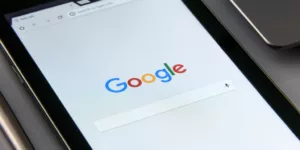The mystery of today’s professional translations is whether translators use Google Translate and trust in it. Is it a really helpful translation tool or just throws translators into total confusion? Two main reasons for using Google Translate would be to bring down costs and speed up the time of delivery. Machine translation will always be dependent on human translators to spot errors and make the text more coherent and easy to read.
The translations provided by Google Translate are machine-based, so the accuracy and the meaning of the final translation are questionable. For example, translators at TheWordPoint don’t use machines for their translations, but certified human experts. This approach ensures that the quality of the translation is outstanding.
The main difference between human and machine translation is the accuracy. When using a machine for translation, translators can expect an incoherent text with a lot of grammar and stylistic mistakes. For instance, if you ever noticed a translation of product description at the back of the product or its manual, where translation didn’t make much sense, it is highly likely that the translation was done by a machine or by an inexperienced translator.
Mostly all translators agree on one thing. If you need to translate a short translation term, it can be useful for coming up with better ideas. Another great thing about Google Translate is that you can review the list of synonyms for every word, which is located below the text boxes. On the other hand, professional translators frequently mentioned three major drawbacks of Google Translate.
1) First of all, machine translation services such as Google Translate and similar applications aren’t programmed to understand culture. Every culture contains culture-specific words that are hard to translate because of their uniqueness. Human translators would probably describe the word instead of wasting their time trying to find its equivalent in another language. Apart from having culture-specific knowledge, professional translators are trained to spot idioms, collocations, and expressions and think of a strategy for their translation. On the other hand, when a machine translates an idiom that is not that common, the translation usually ends up being too literal and not useful for the translator.
2) Professional translators are able to deal with ambiguous words that can be tricky to translate. Context plays a major role in high-quality translation, and it is a concept machines still can’t recognize. If they don’t understand the concept of contextualization, can they ever be perceived as useful? If we take the word “press” as an example, it is obvious that in some cases it would be troubling for a machine to translate it. This word can be a noun and a verb, depending on the context, and have different meanings.
3) Most translators today use CAT Tools and their own Translation Memories, which are really beneficial. Machines are there to help translators and reduce the time necessary for translation, however, automated translations always need to be edited and double-checked. These instant translations aren’t perfect, so a human translator needs to check whether it all makes sense in the end. Then again, if you can’t rely on the machine to produce a perfect translation and have to spend time editing the text, to what extent is Google Translate truly helpful? Some of the translation is also confusing and the translator needs to think long and hard about how to interpret the sentence.
Google Translate has improved immensely throughout the years, but one thing is certain. It will never have the same language competence as the native speaker of the language, who knows when to use slang, jargon, what expressions are appropriate and what not etc. Also, using Google Translate as the only source of translations is not recommended if the translation will be examined in greater detail by certain institutions or legal experts. It still has trouble with cases and gender when it has to translate long, wordy sentences.
To sum up, professional translators agreed that Google Translate can be useful but more for translating some technical terms which you check when the translation is done, and not for large chunks of literary text where you have to take tone, style and the author’s intent into consideration. It doesn’t see behind words, or doesn’t have the ability to read between the lines. Some of the content is even lost when word-for-word translation is applied.








